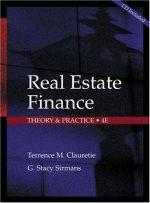Will rate 

Calculate the intrinsic value of GE shares using the free cash flow model of Spreadsheet 18.2. Treat each scenario independently. a. GE's P/E ratio starting in 2020 (cell G3) will be 16. (Round your intrinsic value to the nearest whole number and per share value to 2 decimal places.) Intrinsic Value Per Share PV(FCFF) PV(FCFE) b. GE's unlevered beta (cell B22) is 0.8. (Round your intrinsic value to the nearest whole number and per share value to 2 decimal places.) Intrinsic Value Per Share PV(FCFF) PV(FCFE) c. The market risk premium (cell B27) is 7.5%. (Round your intrinsic value to the nearest whole number and per share value to 2 decimal places.) Intrinsic Value Per Share PV(FCFF) PV(FCFE) 2016 2017 2018 2019 2020 15.00 A. Input data P/E Cap spending/shr LT Debt ($M) Shares (million) EPS Working capital 20.30 1.45 140,000 9,300 1.50 30,000 18.98 1.50 135,000 9,250 1.75 40,000 17.65 1.50 130,000 9,167 2.17 51,667 16.33 1.50 125,000 9,083 2.58 63,333 1.50 120,000 9,000 3.00 75,000 13,950 3,458 = (1-tax_rate) xr_debt x LT Debt B. Cash flow calculations Profits ($M, after tax) Interest ($M, after tax) Chg working cap ($M) Depreciation ($M) Cap spending ($M) 16,175 3,335 10,000 5,800 13,875 19,783 3,211 11,667 6,283 13,750 23,392 3,088 11,667 6,767 13,625 5,350 27,000 2,964 11,667 7,250 13,500 Terminal value 12,047 487,368 4,083 395,683 FCFF ($M) FCFE ($M) 1,435 -6,900 3,861 -4,3501 7,954 -133 assumes fixed debt ratio after 2020 from Value Line current beta /[1 + (1-tax)* debt/equity)] C. Discount rate calculations Current beta Unlevered beta Terminal growth tax_rate r debt Risk-free rate Market risk prem MV equity Debt/value Levered beta k_equity WACC PV factor for FCFF PV factor for FCFE 1.1 0.832 0.06 0.35 0.038 0.025 0.08 YTM in 2016 on Moody's A1 rated LT debt 283,185 0.33 1.1001 0.113 0.084 1.000 1.000 405,000 0.23 0.993 0.104 0.31 1.070 0.111 0.084 0.922 0.900 0.28 1.043 0.108 0.085 0.850 0.812 0.25 1.017 0.106 0.0861 0.783 0.734 Row 3 x Row 11 linear trend from initial to final value unlevered beta x [1 + (1-tax)* debt/equity] from CAPM and levered beta (1-t)*r_debt*D/V + k_equity* (1-D/V) Discount each year at WACC|| Discount each year at k_equity 0.104 0.086 0.721 0.665 0.086 0.721 0.665 D. Present values PV(FCFF) PV(FCFE) 1,323 -6,213 3,282 -3,534 6,227 -98 8,684 2,715 351,287 263,060 Intrinsic val 370,803 255,930 Equity val Intrin/share 230,803 24.82 255,930 27.52 * 2014 P/E ratio is from Yahoo! Finance. Final input is from Value Line, and intermediate values are interpolated. Calculate the intrinsic value of GE shares using the free cash flow model of Spreadsheet 18.2. Treat each scenario independently. a. GE's P/E ratio starting in 2020 (cell G3) will be 16. (Round your intrinsic value to the nearest whole number and per share value to 2 decimal places.) Intrinsic Value Per Share PV(FCFF) PV(FCFE) b. GE's unlevered beta (cell B22) is 0.8. (Round your intrinsic value to the nearest whole number and per share value to 2 decimal places.) Intrinsic Value Per Share PV(FCFF) PV(FCFE) c. The market risk premium (cell B27) is 7.5%. (Round your intrinsic value to the nearest whole number and per share value to 2 decimal places.) Intrinsic Value Per Share PV(FCFF) PV(FCFE) 2016 2017 2018 2019 2020 15.00 A. Input data P/E Cap spending/shr LT Debt ($M) Shares (million) EPS Working capital 20.30 1.45 140,000 9,300 1.50 30,000 18.98 1.50 135,000 9,250 1.75 40,000 17.65 1.50 130,000 9,167 2.17 51,667 16.33 1.50 125,000 9,083 2.58 63,333 1.50 120,000 9,000 3.00 75,000 13,950 3,458 = (1-tax_rate) xr_debt x LT Debt B. Cash flow calculations Profits ($M, after tax) Interest ($M, after tax) Chg working cap ($M) Depreciation ($M) Cap spending ($M) 16,175 3,335 10,000 5,800 13,875 19,783 3,211 11,667 6,283 13,750 23,392 3,088 11,667 6,767 13,625 5,350 27,000 2,964 11,667 7,250 13,500 Terminal value 12,047 487,368 4,083 395,683 FCFF ($M) FCFE ($M) 1,435 -6,900 3,861 -4,3501 7,954 -133 assumes fixed debt ratio after 2020 from Value Line current beta /[1 + (1-tax)* debt/equity)] C. Discount rate calculations Current beta Unlevered beta Terminal growth tax_rate r debt Risk-free rate Market risk prem MV equity Debt/value Levered beta k_equity WACC PV factor for FCFF PV factor for FCFE 1.1 0.832 0.06 0.35 0.038 0.025 0.08 YTM in 2016 on Moody's A1 rated LT debt 283,185 0.33 1.1001 0.113 0.084 1.000 1.000 405,000 0.23 0.993 0.104 0.31 1.070 0.111 0.084 0.922 0.900 0.28 1.043 0.108 0.085 0.850 0.812 0.25 1.017 0.106 0.0861 0.783 0.734 Row 3 x Row 11 linear trend from initial to final value unlevered beta x [1 + (1-tax)* debt/equity] from CAPM and levered beta (1-t)*r_debt*D/V + k_equity* (1-D/V) Discount each year at WACC|| Discount each year at k_equity 0.104 0.086 0.721 0.665 0.086 0.721 0.665 D. Present values PV(FCFF) PV(FCFE) 1,323 -6,213 3,282 -3,534 6,227 -98 8,684 2,715 351,287 263,060 Intrinsic val 370,803 255,930 Equity val Intrin/share 230,803 24.82 255,930 27.52 * 2014 P/E ratio is from Yahoo! Finance. Final input is from Value Line, and intermediate values are interpolated








